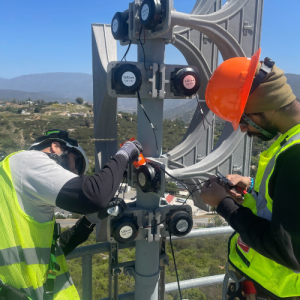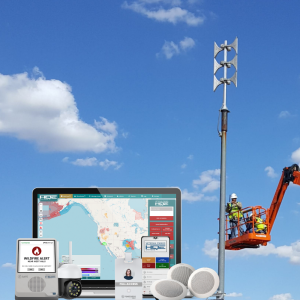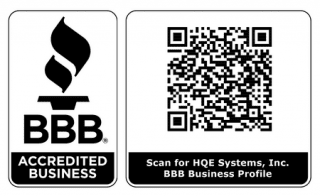119 Lives Lost in Texas Flash Floods: Why Emergency Managers Need Smarter Systems
A Tragedy We Cannot Ignore
The devastating floods that swept through Texas in early July have left the nation reeling. As of July 8, at least 119 people have been confirmed dead, and 161 individuals remain missing, making it one of the deadliest natural disasters in recent Texas history (Washington Post, 2025). The hardest-hit area, Camp Mystic in Hunt, Texas, was ravaged by fast-moving floodwaters that overwhelmed roads, cabins, and entire neighborhoods in a matter of hours.
Witnesses described scenes of chaos and heartbreak as families became separated, vehicles were submerged, and emergency responders worked through the night to rescue those in danger. For many, there was no time to gather belongings or call for help. Some survivors were found clinging to trees or swept miles from where they were last seen.
The Devastation at Camp Mystic and Surrounding Areas
From July 4 through July 7, a devastating sequence of heavy rainfall, rapid river surges, and collapsing infrastructure triggered catastrophic flooding across Central Texas. What began as a typical summer weekend quickly unraveled into one of the worst natural disasters the region has faced in decades. Days of relentless rain overwhelmed the ground’s ability to absorb water, while nearby rivers surged far beyond their capacity. By the evening of July 6, the South Fork of the Guadalupe River had risen to dangerous levels and eventually breached its banks near Camp Mystic in Hunt, Texas, turning once-tranquil grounds into a site of emergency and loss.
Within minutes, floodwaters engulfed roads, cabins, and low-lying buildings. Eyewitnesses recall the terrifying speed at which the situation escalated. Many areas saw water rise several feet within the span of an hour. First responders rushed to deploy rescue boats and helicopters, but in several cases, terrain and debris made access nearly impossible.
Although the disaster affected numerous communities, the tragedy at Camp Mystic has drawn particular attention. The camp, known for its long-standing summer programs, was in full session with hundreds of staff and campers on-site. At least 27 individuals affiliated with the camp are believed to be among the missing or deceased, including children and staff members. Volunteers and off-duty personnel arrived with personal boats to assist in rescues. Some individuals were found clinging to trees, others miles downstream, disoriented and injured.
Emergency managers now face difficult but necessary questions. What early detection tools could have given these families more time? What systems failed, and what solutions can we build to prevent future tragedies? These questions are not about placing blame, but about pushing forward with stronger, smarter preparation for the next crisis.
Emergency Response Challenges
The flooding in Central Texas exposed critical weaknesses in emergency response capabilities. As water levels surged over the July Fourth weekend, emergency teams faced major logistical and technological barriers that slowed rescue efforts and endangered lives.
In many parts of Kerr County and neighboring regions, flooded and washed-out roads made entire communities unreachable. Mudslides, debris, and collapsed bridges halted ground vehicles, forcing rescue crews to rely on helicopters and boats. Even experienced responders found it nearly impossible to navigate the quickly changing landscape. Access to Camp Mystic and surrounding areas became severely restricted as rising water cut off main routes and back roads alike.
Communication failures further complicated the situation. Flooded infrastructure knocked out power and cellular service in key areas. Many residents never received official alerts or were unable to contact authorities for help. In some locations, emergency messages were only spread through door-to-door checks or word of mouth. According to reports, alerts that were sent by mobile systems did not reach everyone in time due to spotty coverage and lack of reliable backup networks (Fox Business).
Despite these barriers, more than 1,000 emergency personnel and volunteers launched a wide-scale rescue operation. Over 440 individuals were rescued in the first three days of flooding. Air support, swift water rescue teams, and citizen responders using personal watercraft and high-clearance vehicles played a vital role in getting to people trapped in homes, vehicles, and flooded campsites (CBS News).
The size and scale of the incident tested the limits of coordination. Emergency managers had to balance rescue operations with setting up shelters, distributing supplies, and managing information about the missing. With 161 individuals still unaccounted for as of July 8, the pressure to deliver answers continues to weigh heavily on response teams (Washington Post).
This flood highlighted a key lesson: real-time information, uninterrupted communication, and interoperable alert systems are essential to saving lives. Without them, even the most skilled teams are left to respond in the dark.
Barriers on Every Front: Emergency Response Challenges
Responding to the Texas floods presented one of the most complex emergency operations in recent memory. The size and unpredictability of the disaster created logistical hurdles that overwhelmed even the most experienced emergency teams.
In many regions, responders were met with flooded access roads, washed-out bridges, and unstable terrain. These environmental factors delayed travel times and forced ground teams to reroute or abandon vehicle access altogether. Air and water rescues became essential, but the coordination required to deploy helicopters and boats across rural counties stretched teams to their limits.
The scale of the response quickly escalated. Over 1,000 first responders, including the Texas National Guard and volunteers, joined in rescue and recovery efforts. At least 440 rescues were recorded during the peak of the flooding, with many more unconfirmed due to fragmented communication logs (CBS News, 2025; CNN, 2025).
Another major challenge was interoperability. Local agencies used different radio frequencies and communication software, creating friction in joint operations. Responders often relied on patchwork solutions to relay updates across agencies, which slowed decision-making during the most critical hours.
The emotional weight was another layer altogether. Many rescue workers endured marathon shifts with limited rest while navigating scenes of significant trauma. From assisting families with missing loved ones to retrieving victims from debris-filled floodwaters, the psychological impact on these individuals will be long-lasting. Community support networks have since mobilized to provide counseling and peer support, but burnout remains a pressing concern.
Supply and personnel shortages further complicated the mission. Shelters faced inventory gaps in food, clothing, and bedding, especially in towns where supply chains were severed. Emergency managers reported difficulty moving resources between counties due to road closures and the sheer number of displaced families (Washington Post, 2025).
Most concerning was the fragmented alert infrastructure. While early warnings were issued in some regions, others were delayed or never received—especially where power and cell service had already failed. As a result, responders were tasked not just with evacuation and rescue, but also with reestablishing lines of communication on the ground (Fox Business, 2025).
These challenges underscore the need for coordinated technology, faster mutual aid activation, and redundant systems that can operate independently when primary infrastructure fails.
How HQE Systems Could Have Helped
In the face of the catastrophic flooding that devastated Camp Mystic and surrounding Texas communities, emergency managers were forced to navigate an overwhelming scale of loss, limited communication, and unreliable infrastructure. This tragic event represents not just a humanitarian crisis, but also an opportunity to reimagine how advanced technologies could be used to protect lives and improve operational efficiency in future disasters.
HQE Systems specializes in integrated, intelligent, and resilient life safety and electronic security solutions that would have made a meaningful impact during this event. Our technologies are specifically engineered for moments like this, when seconds count and communication is critical.
- Multi-Channel Mass Notification Systems Traditional alerts, often reliant on cellular service or landlines, failed many families during the Texas floods. HQE’s SiRcom SMART Alert Software (SiSA) leverages multi-channel distribution: radio frequency, outdoor public address, SMS, voice calls, email, desktop alerts, and digital signage. This ensures that critical warnings reach affected individuals even when power and cell towers go down. We can integrate and automate National Weather Service alerts, lightning detection systems, and flooding thresholds, triggering localized, targeted alerts that are fast and effective.
- Outdoor Warning Sirens and Public Address Systems Rural and camp communities like Camp Mystic need a dependable backup when cellular coverage fails. HQE’s outdoor sirens are not generic alarm systems. They are customized by disaster type, geofenced zones, and specific operating hours. For example, our deployment in Clearwater, Florida uses lightning detection to automatically trigger sirens during dangerous electrical storms. That same customization can be used for flash flood-prone areas.
- Resilient Off-Grid Communication Hubs When Texas responders lost communication due to power and cell outages, HQE’s ruggedized emergency communication hubs would have kept critical systems online. Our systems run off solar with backup batteries and can operate independently for days. These hubs enable real-time alerting, support two-way communications, and maintain situational awareness even when utility grids collapse.
- Centralized Command and Control Dashboards HQE Systems’ software unites all technologies into one cohesive platform. Emergency managers can monitor environmental triggers, alert performance, system health, staff locations, and drone footage from one pane of glass. That level of integration minimizes chaos and empowers leadership to make fast, data-driven decisions.
- Human-Centered Automation, Not Noise Our goal is not to overwhelm communities with constant sirens. Automation can be customized by time, disaster type, and location. It is not an all or nothing solution. We ensure alerts are actionable, not annoying, building trust, not fatigue.
This is what HQE Systems brings to the table: intelligent, modular tools that can scale with your jurisdiction, adapt to your community, and strengthen your emergency response. It is time to move beyond siloed tech and legacy systems. The future of life safety is integrated, proactive, and precise, and HQE is here to help you build it.
Best Practices for Emergency Managers
The Texas flooding disaster serves as a sobering reminder that preparedness must evolve alongside the risks we face. Emergency managers need tools and strategies that match the scale and complexity of today’s climate-driven events. Below are five key practices to strengthen response capabilities and build long-term resilience.
- Use Multiple Alerting Channels
Do not rely on a single method of communication. Implement systems that deliver alerts through text, outdoor sirens, radio, email, landlines, and digital signage. This layered approach ensures people receive life-saving warnings, even if one network fails. - Train for Real Emergencies
Evacuation plans are only useful if they are practiced. Run regular drills in vulnerable areas like schools, summer camps, and assisted living facilities. Include reunification steps, transportation support, and procedures for individuals with limited mobility. - Equip Mobile Command Resources
Disasters often disrupt fixed infrastructure. Mobile command units with satellite connectivity and backup power help maintain coordination in the field. They provide a reliable base for deploying resources, gathering updates, and issuing orders under pressure. - Partner with Specialized Technology Providers
Work with companies that offer integrated emergency systems tailored to your needs. HQE Systems, for example, delivers solutions that combine alerts, tracking, geofencing, and automation into one cohesive platform. Having the right tech in place before a disaster reduces response time and confusion when every minute matters. - Conduct Meaningful After-Action Reviews
Post-incident evaluations are critical. Review what succeeded, where delays occurred, and which tools proved most effective. Involve frontline responders, local officials, and community partners. Use findings to improve protocols, update tools, and refine communication workflows.
Preparedness is not about checking boxes. It is about building systems that work under real conditions, with real people depending on them. Emergency managers who invest in modern infrastructure, ongoing training, and strong partnerships will be better positioned to save lives and restore order when disaster strikes.
Staying One Step Ahead of the Storm
Climate models and historical data both point to a clear trend: flash floods are becoming more frequent, more intense, and more destructive. Texas alone has experienced multiple record-breaking flood events in just the past decade. As rainfall events grow more extreme, the window for effective response is shrinking. Emergency managers are being asked to do more, faster, and with fewer resources.
But weather is not the only evolving threat. Infrastructure weaknesses, communication blind spots, and growing populations in flood-prone areas all compound the risks. Static emergency plans are no longer enough. Agencies need dynamic, tech-enabled strategies that adapt to changing conditions in real time.
That is where HQE Systems positions itself, not just as a vendor but as a strategic partner. We continuously update our solutions to match emerging threats, shifting climate patterns, and customer feedback. Whether it is automating National Weather Service alerts, geofencing at-risk areas, or ensuring uninterrupted power through solar communication hubs, our technology is designed for what comes next.
Preparing for tomorrow’s disaster means acting today. Building trust in your emergency systems, improving coordination, and closing the warning gap are not optional. They are mission critical. The storms will keep coming. The question is, will your community be ready?
From Tragedy to Transformation
The devastating floods in Texas, particularly at Camp Mystic, serve as a sobering reminder that nature moves fast and sometimes our systems do not. Over 100 lives lost. More than 160 still missing. These numbers are not just statistics. They are mothers, sons, neighbors, and friends. The grief is immeasurable. But so is the call to action.
Emergency managers are on the front lines of protection. You cannot control the weather, but you can control how prepared your community is when it strikes. Now is the time to review your technology, reassess your protocols, and reimagine your readiness.
HQE Systems offers no cost readiness assessments for emergency managers looking to modernize their alerting, communication, and coordination infrastructure. From rural towns to regional hubs, we tailor solutions to meet your challenges before the next crisis begins.
HQE Systems is a certified Veteran Owned Company. For more information about HQE Systems Inc. and its emergency management, electronic security, and integration solutions, please visit www.hqesystems.com.

Contact: David Ditto (Early Warning Systems Subject Matter Expert)
Email: David.Ditto@hqesystems.com
Phone Number: (843) 872-7020
____________________
HQE Systems, Inc. | HQE is a Minority-Owned Service Disabled Veteran Owned Small Business (SDVOSB) providing full solutions for: Mass Notification Systems, Electronic Security Systems, Software Development Services, Contract Support, and Prototyping Services. As a brand-agnostic solutions provider, HQE prides itself in providing the BEST solution for the project. HQE possesses over 30+ factory certifications and reseller licenses to ensure our clients receive the highest quality service at the ideal budget. HQE can provide full design, installation, integrations, upgrades, and long-term maintenance support for any size and scope project.








